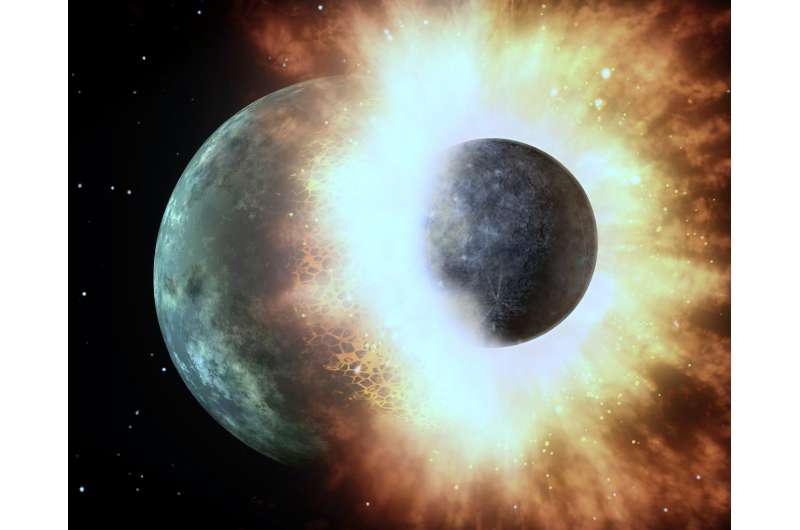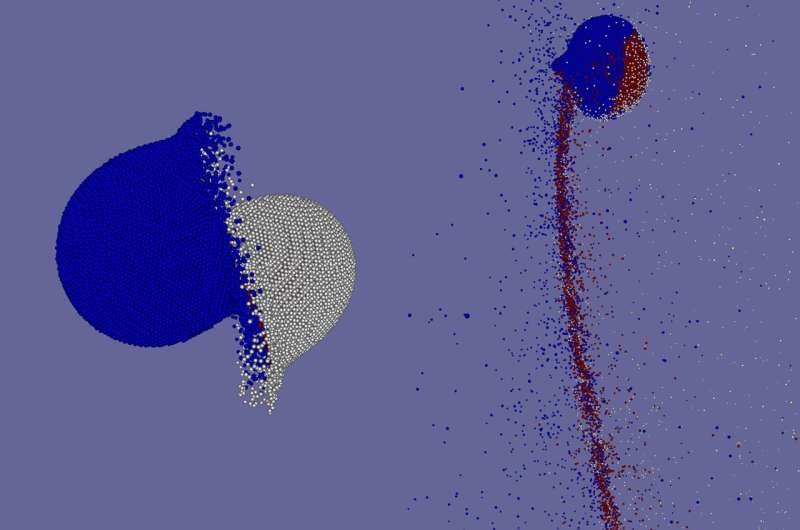Hit-and-run heist of water by terrestrial planets in the early solar system

A study simulating the final stages of terrestrial planet formation shows that 'hit-and-run' encounters play a significant role in the acquisition of water by large protoplanets, like those that grew into Mars and Earth. The results will be presented by Christoph Burger at the European Planetary Science Congress (EPSC) 2018 in Berlin.
Four and a half billion years ago, the inner Solar System was a chaotic place with around 50-100 protoplanets ranging in size from the Moon to Mars that were prone to giant collisions. Bodies that formed within what is now the orbit of Mars contained no water as the conditions were too hot for volatile material, like water or methane, to condense. For water to make its way onto the developing terrestrial planets, water needed to be delivered from outside this region via a sequence of collisions.
Burger and colleagues from the University of Vienna and Tübingen have used high-resolution simulations to track the fate of water and other materials through a series of different impact scenarios. Outcomes of collisions could include bodies sticking together, material being lost, or being redistributed between the two objects. The results depend on various factors like the speed and angle of impact, the difference in mass between the bodies and their total mass.

"We found that 'hit-and-run' collisions, where the impact is off-centre and the bodies have enough speed to separate again after the encounter, are very common. In these scenarios, tens of percent of water can be transferred between the colliding bodies or ejected and lost entirely," said Burger.
The smaller of the colliding pair is often modified down to the core and effectively stripped of water, while the more-massive body remains more-or-less unaltered. The team is now focusing on how long chains of successive collisions affect the evolution of a disk of planetesimals and protoplanets.
"Recent research shows that comets can only account for a small fraction of the terrestrial planets' water. These giant collisions early in the Solar System's history must also be a major source. Our results strongly suggest we need to track the water in both survivors following hit-and-run encounters. This will help us predict the properties of planets that form as the end-product of a long sequence of successive collisions," said Burger.
Provided by Europlanet





















